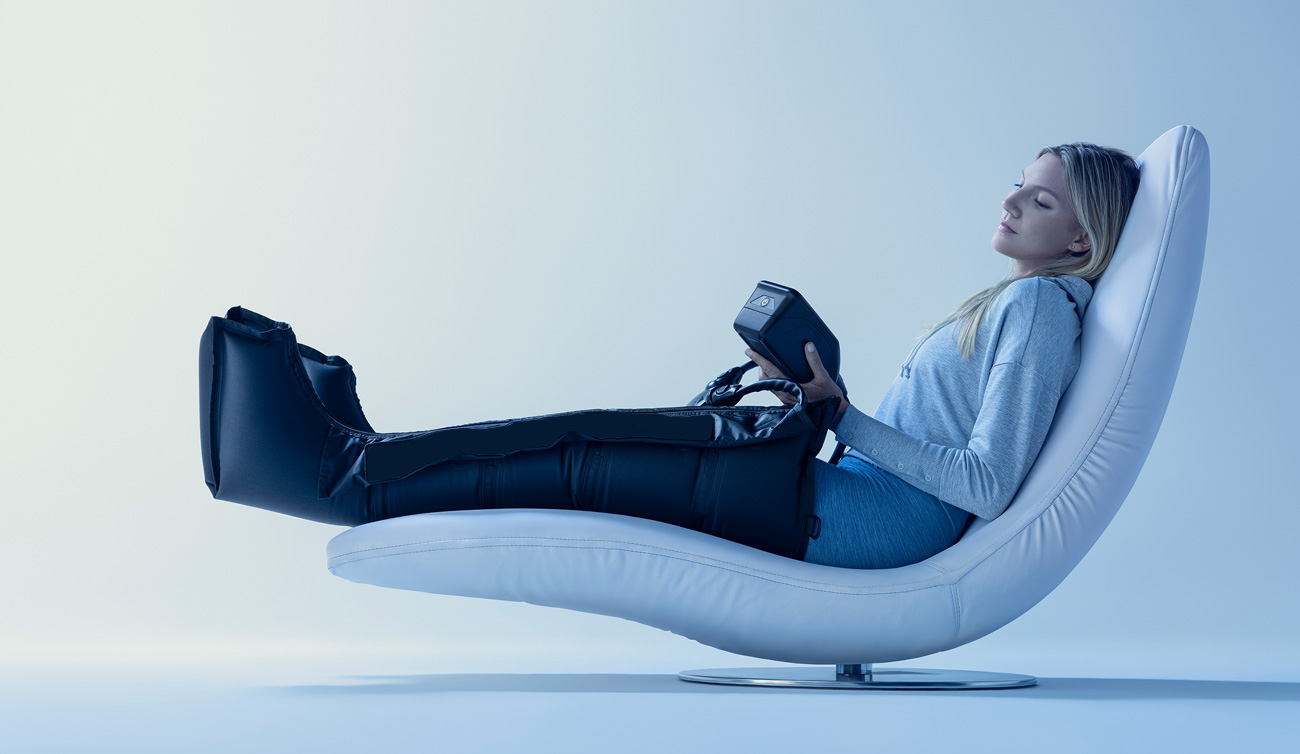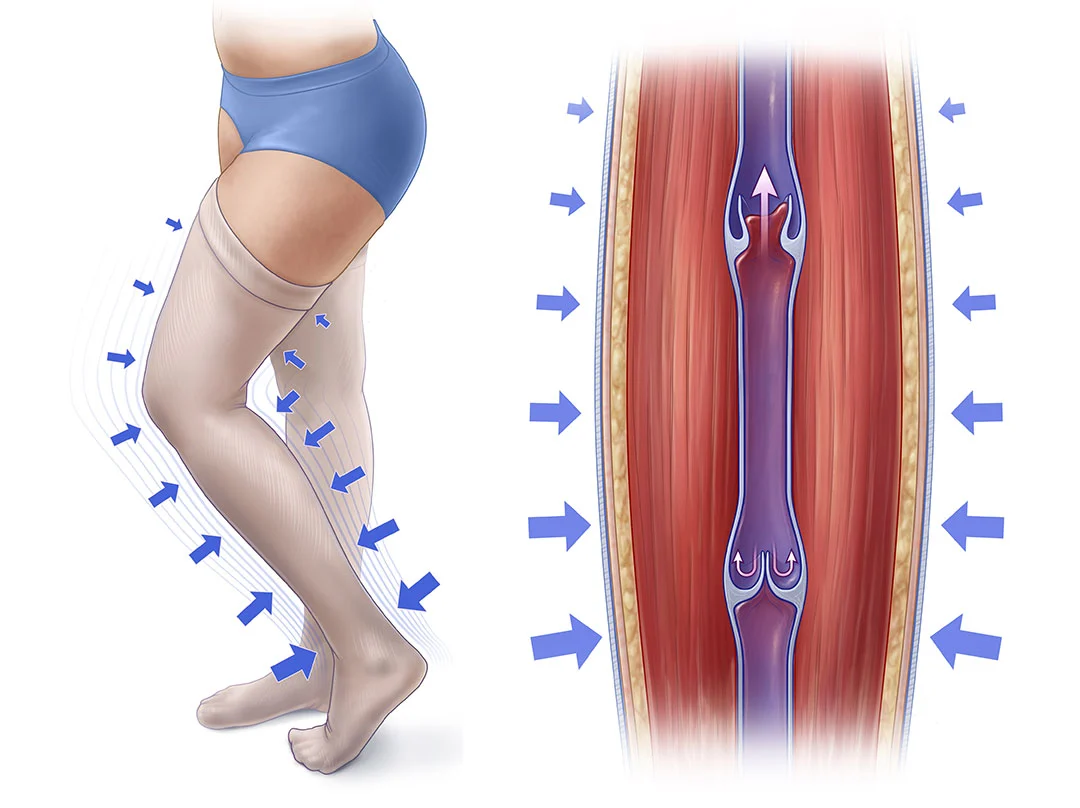

We offer Compression Therapy for the treatment of chronic venous insufficiency and lymphedema
Chronic venous insufficiency is the most common cause of lower extremity ulceration, accounting for up to 80% of the approximately 2.5 million cases of leg ulcers in the United States.
The goals of treatment in patients with chronic venous disease and lymphedema are the reduction of discomfort and pain, the reduction of the severity and extent of edema, the improvement of skin changes (eg, lipodermatosclerosis), and the healing of associated ulcers. Compression therapy remains the primary and most important treatment for these conditions. For patients with venous ulceration, the benefits of long-term compression therapy (stockings or bandages) have been repeatedly demonstrated in randomized studies. Healing rates of up to 97% can be achieved in patients with venous ulcers who are compliant with treatment. Patients with edema, active discharge, or skin changes in the absence of ulceration also benefit.
References:
1. Brem H, Kirsner RS, Falanga V. Protocol for the successful treatment of venous ulcers. Am J Surg 2004; 188:1.
2. Shi C, Dumville JC, Cullum N, et al. Compression bandages or stockings versus no compression for treating venous leg ulcers. Cochrane Database Syst Rev 2021; 7:CD013397.
3. Douglas WS, Simpson NB. Guidelines for the management of chronic venous leg ulceration. Report of a multidisciplinary workshop. British Association of Dermatologists and the Research Unit of the Royal College of Physicians. Br J Dermatol 1995; 132:446.
4. de Araujo T, Valencia I, Federman DG, Kirsner RS. Managing the patient with venous ulcers. Ann Intern Med 2003; 138:326.
5. Mayberry JC, Moneta GL, Taylor LM Jr, Porter JM. Fifteen-year results of ambulatory compression therapy for chronic venous ulcers. Surgery 1991; 109:575.

